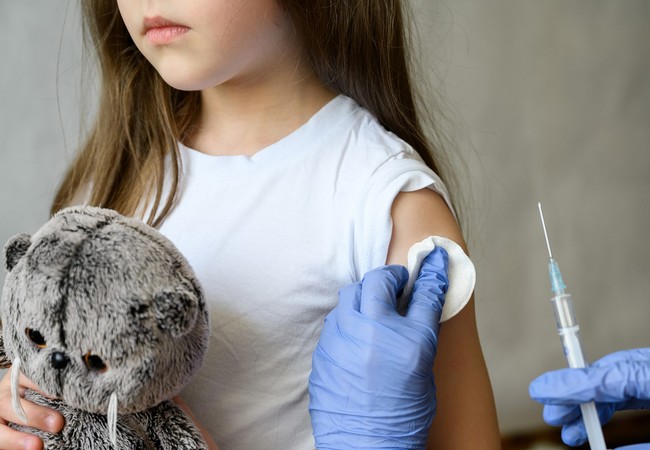Definition of Tetanus in Children:
Tetanus is an acute infectious bacterial disease caused by Clostridium tetani and characterized by muscular stiffness and painful paroxysmal spasms of the voluntary muscles caused by the powerful neurotoxin of the causative organism.

Tetanus is a wound infection caused by Cl. tetani. Occurring usually in the deep, contused, soil contaminated injuries with pyogenic organism it containing foreign bodies. Tetanus is wound, caused by exotoxin of clostridium tetani. Characterized by painful paroxysmal spasm of voluntary muscle and muscular rigidity.
A. Incubation period: 6 – 10 days
B. Agent factors:
- Agent: Clostridium tetani is a Gram positive, spore bearing and anaerobic bacteria.
- Reservoir of infection: Soil and dust, intestine of herbivorous animals (eg. cattle, goats, ship etc).
C. Patient factors:
- Occupation: Agricultural workers mostly affected.
- Immunity: No age is immune unless protected by immunization.
Classification or Types of Tetanus in Children:
Based on related causes-
- Traumatic,
- Otogenic,
- Neonatal,
- Puerperal, and
- Idiopathic.
Clinical types-
- Localized,
- Generalized, and
- Cephalic.
Clinical Features or Sign and Symptoms of Tetanus in Children:
Localized Tetanus:
- Pain,
- Constant rigidity,
- Muscle spasm in the region of injury.
- It may be associated with otitis media.
Generalized tetanus:
- Lock jaw’ or trismus due to stiffness of the masseters which make the difficulty in opening mouth,
- Generalized muscle spasms, precipitated by external stimuli like touch, loud sounds, bright light etc.,
- Difficulty in swallowing,
- Restlessness,
- Irritability,
- Headache,
- Neck rigidity,
- Spasms of facial muscles,
- Spasms and rigidity of muscles of back and neck make the body arch backward like a bow (opisthotonic position) constant spasm of the muscles of the extremities and abdomen,
- Convulsion,
- Tetanic spasm with clenching of jaws and hands,
- Spasm of laryngeal muscles with respiratory distress,
- Cyanosis, and
- Over exhaustion.
Cephalic tetanus:
- Paralysis of one or more of the cranial nerves (usually 7th) with gradual spastic manifestations-of whole body.
Complications of Tetanus in Children:
Respiratory complications:
- Aspiration,
- Pneumonia,
- Pneumothorax,
- Mediastinal emphysema.
Cardiovascular complications:
- Hypertension or hypotension,
- Arrhythmia,
- Myocarditis.
Miscellaneous:
- Injury of tongue or oral mucosa,
- Intramuscular hematoma and vertebral fracture during tetanic convulsions,
- Fluid and electrolyte imbalance,
- Malnutrition.
More questions related to this topic:
- What is tetanus in child?
- What do you mean by tetanus?
- What is the classification of tetanus?
- What are the clinical features of tetanus?
- List the sign and symptoms of tetanus.
- What are the signs and symptoms of tetanus?
- What are the complications of tetanus in child?

Maria Khatun Mona is a Founder and Editor of Nursing Exercise Blog. She is a Nursing and Midwifery Expert. Currently she is working as a Registered Nurse at Evercare Hospital, Dhaka, Bangladesh. She has great passion in writing different articles on Nursing and Midwifery. Mail her at “maria.mona023@gmail.com”
